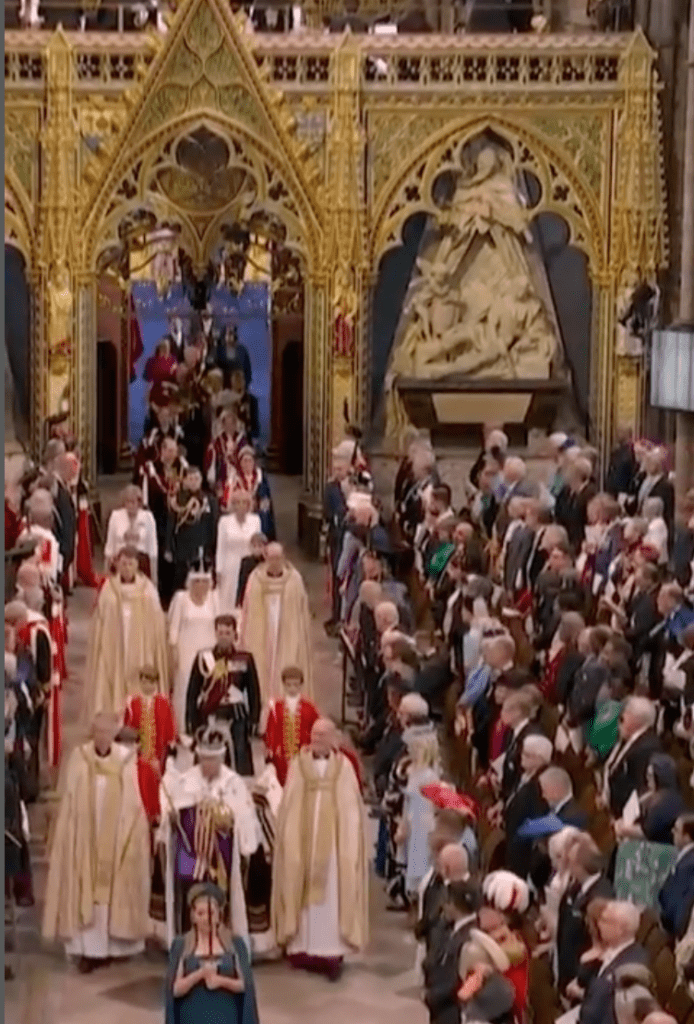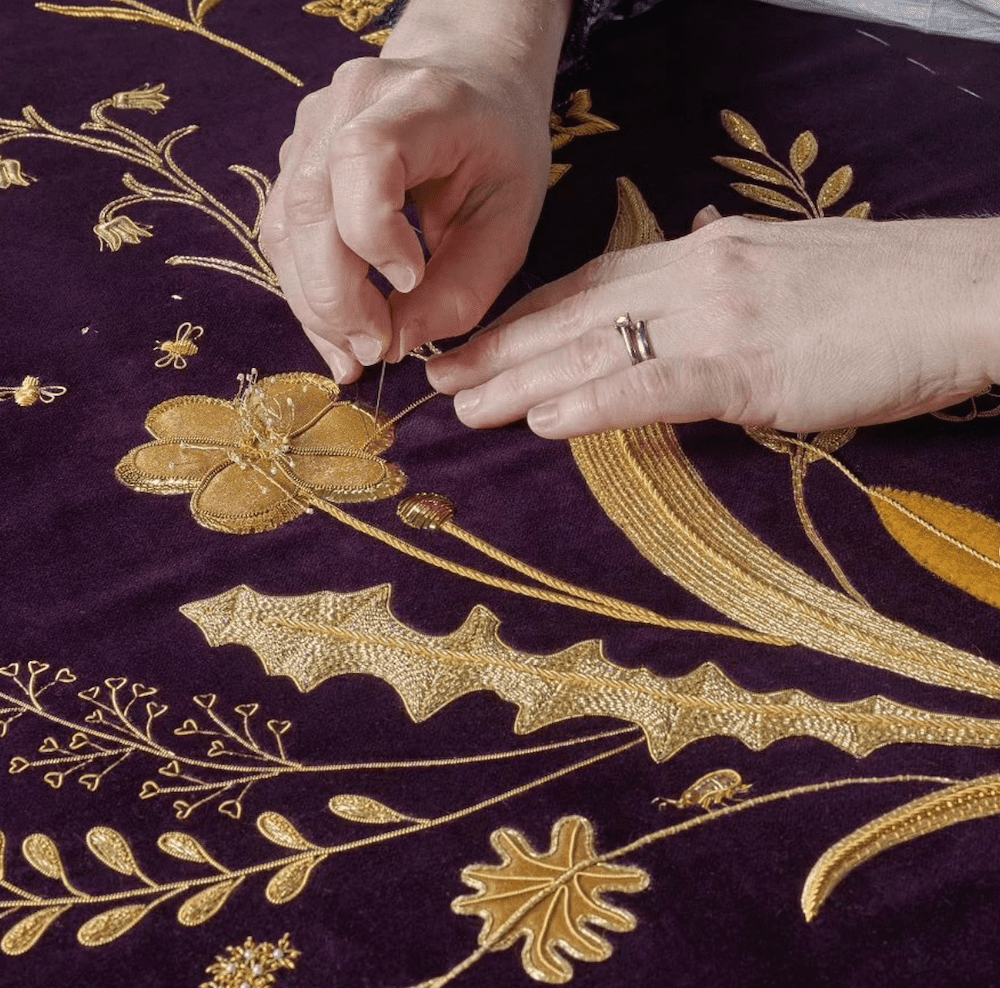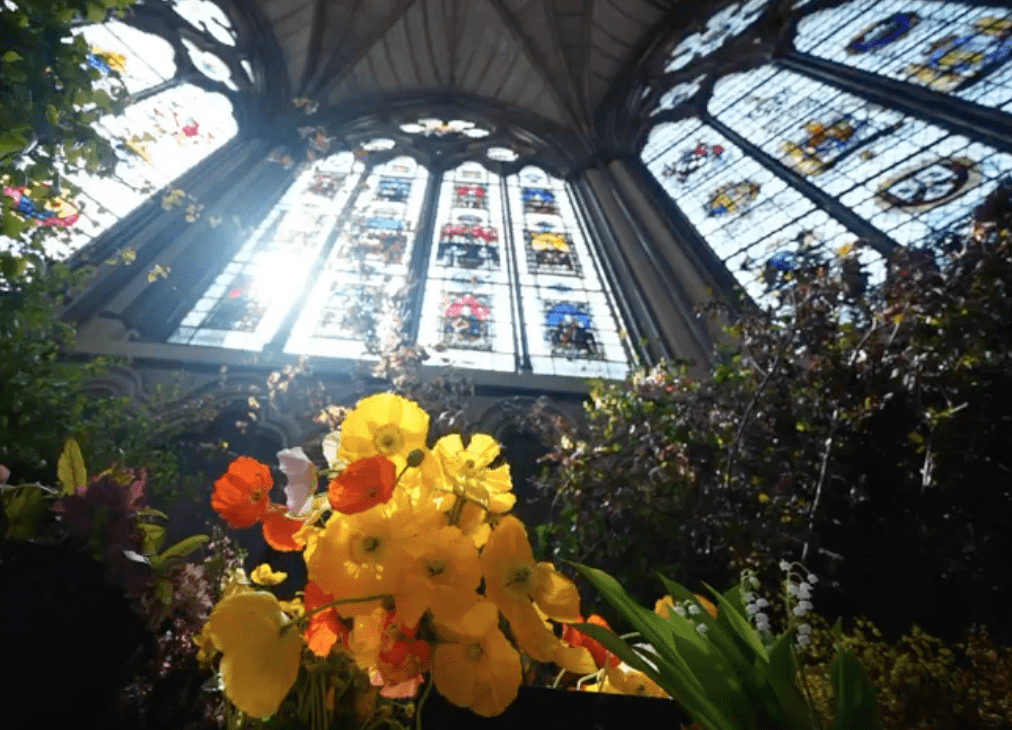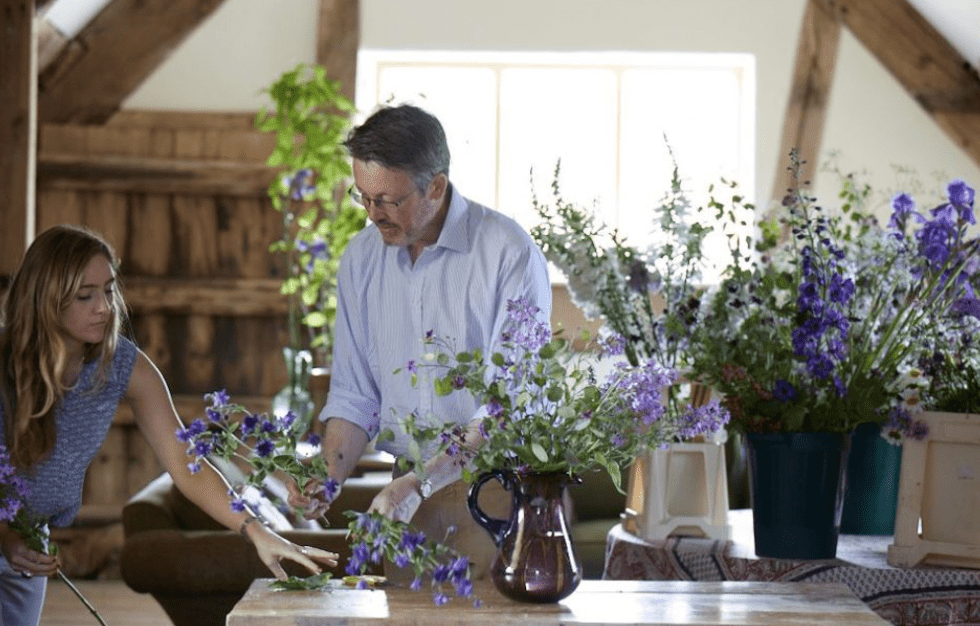Coronation Plants Seed for More Local Grown Flowers
By Jill Brooke

Those watching the Coronation of King Charles III and Queen Camilla at Westminster Abbey may have wondered why there wasn’t an abundance of flowers popping on the screen.
“It’s a more solemn occasion so flowers are there to complement, not enhance,” explains British gardener Sarah Kowitz.
Nonetheless, the symbolism of those flowers at Westminster Abbey and the embroidered flower selections on Queen Camilla’s robe and Catherine, Princess of Wales’s dress, reflect thoughtful contemplation.
Since the Royal Family is discouraged from discussing personal opinions, flower choices allow expressions of sentiments without words. This tradition dates back to Queen Victoria in the late 19th century who popularized the language of flowers.

In an expression of love for Queen Elizabeth, whose coronation bouquet in 1953 included a lily of the valley, Queen Camilla had the Royal School of Needlework sew Queen Elizabeth’s favorite flower into her coronation robe, among other pollinating insects and flowers.
In fact, in their wedding bouquets, both Queen Camilla and Catherine, Princess of Wales, included the lily of the valley. The lily of the valley was also Queen Elizabeth’s favorite flower.
Since Alexander McQueen’s Sarah Burton designed Catherine Princess of Wales’s wedding dress in 2011, the design house created her ivory coronation outfit. It included embroidery featuring the four British nations: the Welsh daffodil, the Scottish thistle, the Irish shamrock and of course, the English rose.
Instead of a lavish tiara, Kate Middleton chose a headpiece with silver threads of leaves that reflect King Charles’ and Queen Camilla’s love of nature and sustainability practices.

At Westminster Abbey, the sustainable foam-free arranged flowers were designed by the uber-talented Shane Connolly. With the help of Flowers from the Farm, a non-profit association that champions artisan growers, the team grew over 120 varieties of flowers from around the country.
At the Grave of the Unknown Warrior, “echoing the colorful British wildflower meadow seen on the hand-painted Coronation invitations,” rosemary symbolizing remembrance was part of the display. Other flowers, shared Connelly, were “bay for virtue, bluebells, forget me nots, for constancy of love, daffodils for chivalry, cowslips, lilac for memories of youth, and lily of the valley and auriculas, which both appeared in The Queen Consort’s wedding bouquet.”
At the Quire, Connolly explained, were hellebores. This flower made an appearance on the lapel of King Charles’III at his 2005 wedding, and is “a particular favorite of the King,”
Other flowers were “honeysuckle, tulips, ranunculus, aquilegia, which is the ancient symbol of the Holy Spirit, with foliage of rosemary, birch, bay and hazel, and wild broom grown on the Isle of Skye.”
Adorning the altars were “boughs cut from flowering shrubs and trees from the five Royal Horticultural Society gardens across the British Isles, including branches from the pair of Dawyck beech trees planted by Queen Elizabeth II and Prince Phillip, the Duke of Edinburgh at RHS Isle in 1978.”

Many believe that anointing Shane Connolly as the florist will have a ripple effect in promoting sustainable floristry.
“His work recalls simpler times – long before fossil fuel-based design mediums and the global flower trade dominated the floral marketplace,” says Canadian sustainable florist Becky Feasby of Prairie Girl Flowers.
Debra Prinzing, who started the Slow Flowers Movement in the U.S. and has Connolly coming to her September summit, says many are “inspired by the symbolism of the Royal Coronation with botanicals grown close to home.”
“It’s a tribute to King Charles III’s commitment to sustainability,” she adds. “It’s an important and intentional gesture for floral designers who value earth-friendly practices.”
Plus, the designs were pretty and tasteful.
The biggest bursts of obvious color were the thousands of tulips planted in front of Buckingham Palace where the family gathered after the Coronation. The tulips are called, “Kingsblood.”
Noticeably absent were delphiniums – King Charles III’s favorite flower. Nor was there any mention of the lady’s mantle. This flower, which symbolizes love and comfort, is Queen Camilla’s favorite flower.
However, as others mentioned, the private lunches and subsequent Sunday night concert will have plenty of opportunities for other flowers to be featured and shine on this historic celebratory occasion.

Jill Brooke is a former CNN correspondent, Post columnist and editor-in-chief of Avenue and Travel Savvy magazine. She is an author and the editorial director of FPD and a contributor to Florists Review magazine.
